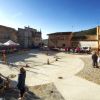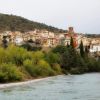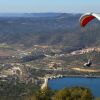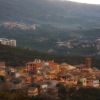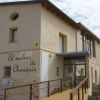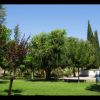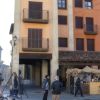The municipal area of El Grado-Lo Grau incorporates four villages, those of Artasona, El Grado, Coscojuela de Fantova and Enate. This exceptional location boasts a variety of attractions and activities. It is the perfect place for getting into contact with nature and is also a place to learn about local heritage, culture and popular traditions, not forgetting the pleasure of enjoying local specialities and the excellent wine of Somontano.
The old village of El Grado is made up of a number of narrow streets and is thought to date back to Roman times. After a period of Muslim rule the village was re-conquered by King Sancho Ramirez in 1083 and later passed into the hands of the Baron of Antillon, whose dominion was eventually sold to the city of Zaragoza.The medieval splendour of the village is reflected in the narrow urban landscape. The main street of El Grado runs between areas of varying topography and the smaller side streets rise steeply to meet it. The street layout is reminiscent of a distant medieval era, in particular Calle Mayor, which is finished off with two pointed arches.
The parish church of San Salvador (16th - 17th centuries) reflects the Aragonese Gothic style and is one of the largest churches in the municipality.
Life in the village was peaceful until the construction of the huge dam and reservoir in the 20th century, which changed both the development and landscape of the area considerably.
The magnificence of the reservoir offers an alternative way to appreciate and enjoy nature and water is a fundamental aspect of local daily life. The waters of the River Cinca snake across dramatic, rocky landscapes and pour into the reservoir. This creates the perfect environment for trout, black bass, perch, carp and barbel and as a consequence, fishing is a popular pastime.
El Grado celebrates it major fiestas on the 8th September in honour of the Virgen del Viñero. A medieval act known as “La Morisma” takes place on the 9th September, which sees the villagers re-enact the fight between Moors and Christians concluding with the apparition of the Virgin Mary. The start of the grape harvest is also celebrated the same day with the traditional and symbolic treading of the grapes.
On 11th November, locals take part in a pilgrimage to the San Martín chapel. The village is also one of the venues of a classical musical festival known as “Clásicos en la frontera” which offers a programme of cultured recitals in places of special patrimonial interest.
The World Parchis Championships (a game similar to Ludo) are held in El Grado every two years and attract over 500 participants of all ages. The board and dice of this traditional game are the protagonists of village life during the weekend of the competition.Another headline grabbing sport in the village is that of motor racing, as the well-known Alto de San Roque trials take place here. Many drivers from all over Spain take part and points are recognised for the Aragonese Championships.
The Route of Unique Trees provides the perfect excuse to discover the attractions of the four villages of the municipality from a botanical viewpoint.
El Grado offers excellent gastronomy that combines traditional Aragonese cooking with innovative cuisine based on fresh, local products such as trout, wild mushrooms, lamb and the exceptional wines of the D.O. Somontano.



